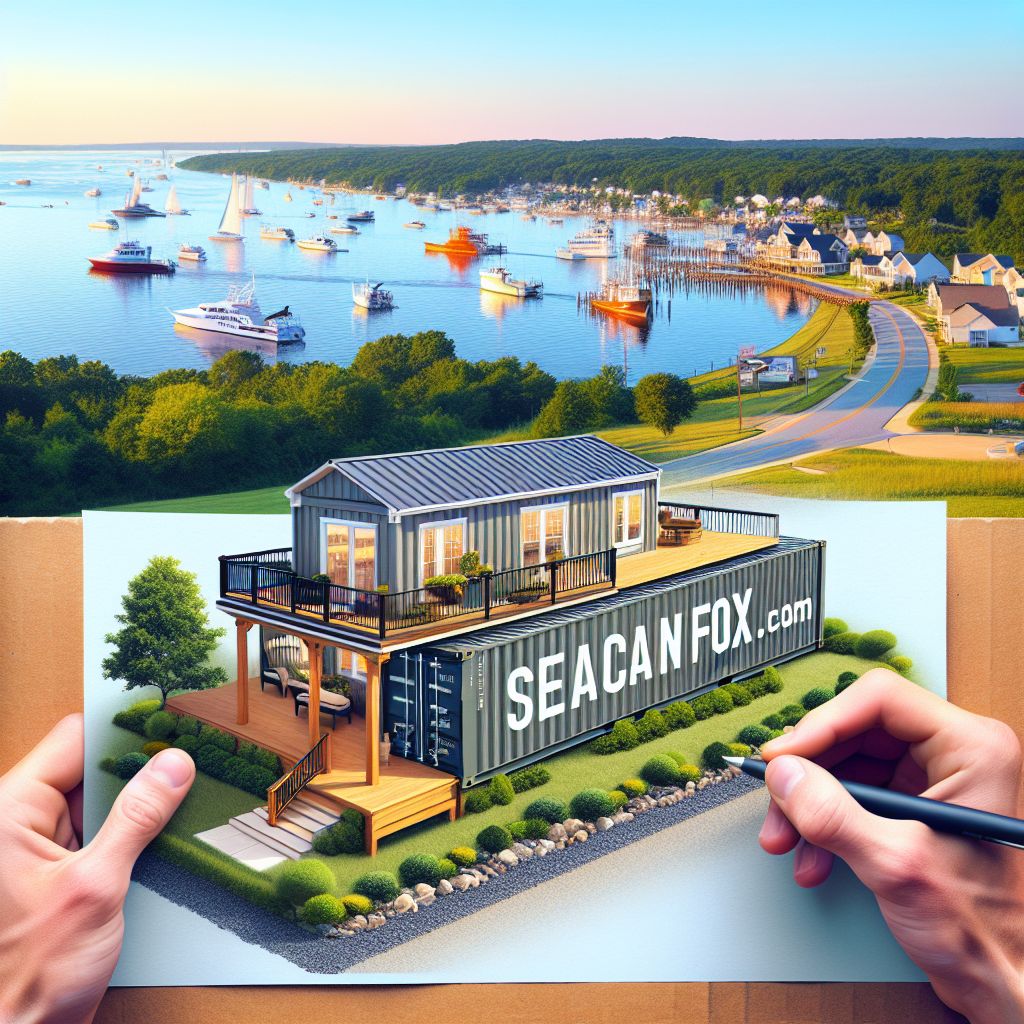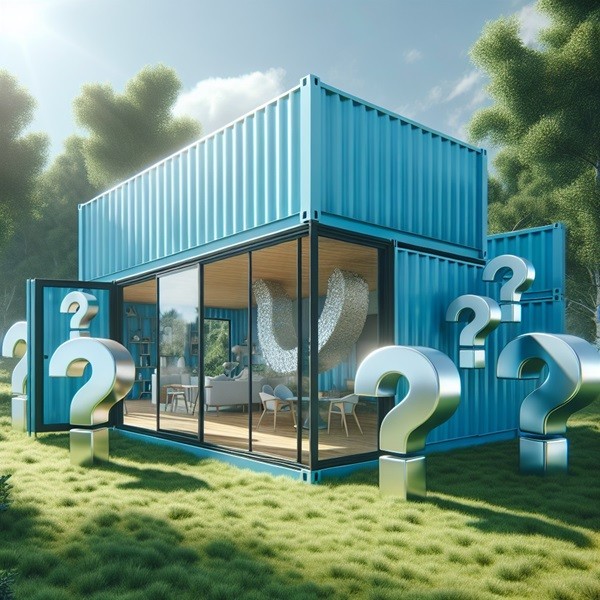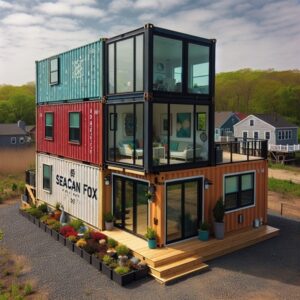
Key Takeaways: Maryland’s Shipping Container Home Legality
- In
, you can build a shipping container home, but local regulations and zoning codes must be followed. - Acquiring the proper permits is a must, and you should be ready for inspections to ensure compliance with state regulations.
- Adapting your container home to Maryland’s varied climate is important for comfort and energy efficiency.
- Financial incentives may be available to help with the cost of building a sustainable container home.
- Maryland offers a unique opportunity for those looking to embrace a sustainable lifestyle with container homes, but there are challenges to consider.
Unlocking the Possibilities: Shipping Container Homes in Maryland
Imagine a home that not only cuts down on construction waste but also gives you a unique, modern living space. That’s the promise of shipping container homes. In Maryland, the trend is catching on, with more people looking towards these steel boxes as a potential place to call home. But the question stands: Are shipping container homes allowed in Maryland?
My Favorite Container Homes Resource
I compared the top 3 Container Home Guides
to discover the ultimate resource!
See my top recommendation here
What Does Maryland Law Say?
Let’s get right to the point. Maryland does allow shipping container homes, but it’s not as simple as placing a container on a plot of land and moving in. You have to navigate the legalities, which means understanding the zoning laws specific to where you want to build. Each county and municipality might have different rules, so it’s crucial to do your homework. Besides that, you’ll need to ensure that your container home meets state and local building codes, which are in place to keep you safe.
Steps to Legally Building Your Container Home
Before you start dreaming up your new home, there are some concrete steps you need to take:
- Research local regulations: Each area in Maryland has its own set of rules. You need to check with your local planning and zoning department to see what’s allowed.
- Obtain necessary permits: This is a critical step. Without the right permits, your container home project could come to a halt. You’ll likely need a building permit, and depending on your location, possibly others related to zoning, land use, and utilities.
- Comply with building codes: Your container home must adhere to the Maryland Building Performance Standards (MBPS) and any local codes, including structural, fire safety, and energy efficiency standards.
It’s a process, but it’s worth it to ensure your container home is safe and legal.
Decoding Maryland’s Zoning Codes for Container Homes
Understanding residential zoning implications is like putting together a puzzle. Each piece represents a different regulation, and they all need to fit together for your container home project to be successful.
Understanding Residential Zoning Implications
Zoning codes can be complex, but here’s what you need to know: they determine what types of structures can be built on a piece of property. In Maryland, some areas might be zoned for residential use, which would typically allow for container homes. However, other areas might be zoned for agricultural or commercial use, which could complicate things.
Navigating Commercial to Residential Rezoning
If the land you’re eyeing is not zoned for residential use, don’t lose hope. You might be able to apply for rezoning. Keep in mind, though, this can be a lengthy and uncertain process, as it often involves public hearings and meetings with local officials.
For example, if you’re looking at a piece of property zoned for commercial use, you’ll need to present a strong case for why it should be changed to residential. This might include showing how your container home will fit into the community and benefit the area.
After understanding the zoning codes, the next logical step is to look into the permitting process.
Adapting Your Container Home to Seasonal Weather
Maryland’s weather can be a mixed bag, with hot, humid summers and cold, snowy winters. To make your container home cozy year-round, it needs to be well-prepared for these extremes. This means proper
Insulation is key. Traditional homes have wood framing that allows for insulation between the studs, but shipping containers are a solid steel box. You’ll need to add a layer of insulation on the inside or outside to keep your home at a comfortable temperature. There are several types of insulation suitable for container homes, including spray foam, which also helps to seal any air gaps.
Another consideration is your HVAC system. Energy-efficient options like mini-split systems can provide both heating and cooling and are well-suited for the compact spaces within a container home. They’re also less invasive to install, which is a plus when working with the rigid structure of a shipping container.
Energy Efficiency and Insulation Techniques
When it comes to energy efficiency, insulation is just the start. Windows are another crucial element. Opt for double or triple-paned windows to minimize heat transfer. Additionally, installing energy-efficient appliances and LED lighting can help reduce your carbon footprint and save on utility bills.

Funding Your Sustainable Home Project
Uncovering Grants and Financial Incentives
Some organizations offer grants for sustainable building projects. It’s worth looking into local and national programs that support green building initiatives. Maryland, in particular, has been known to offer incentives for energy-efficient construction.
Additionally, federal tax credits for energy efficiency can help offset some of the costs. These incentives change frequently, so it’s important to stay up-to-date with the latest information.
- Database of State Incentives for Renewables & Efficiency (DSIRE) for federal and state-specific incentives
- Energy Star rebates for energy-efficient appliances and products
- Local utility company rebates for installing energy-efficient systems
- Green building certification programs that may offer financial perks
- Community development grants for sustainable projects
Remember, every little bit helps when it comes to funding your sustainable home project.
Creative Financing Options for Container Home Builders
Besides grants and incentives, there are other ways to finance your container home. Traditional mortgages might be challenging to secure for a non-traditional home, but there are alternatives. Construction loans, personal loans, and even crowdfunding are viable options. Some builders have even found success with leasing the land their container home sits on, reducing upfront costs.
Cost of Container Home Ownership in Maryland
Now, let’s talk numbers. What can you expect to spend on your Maryland container home from start to finish?
Price Breakdown: Acquisition to Completion
It usually costs between $1,500 to $5,000 to purchase a used shipping container. From there, the price to convert it into a livable space can vary widely based on size, design, and the level of finishes you choose. On average, the total cost can range from $10,000 to $35,000 for a basic home, with more elaborate designs reaching upwards of $150,000 or more.
Maintenance and Upkeep Expenses
One of the perks of container homes is that they are generally low maintenance. The steel structure is resistant to pests and rot, which can plague traditional wood homes. However, they can be susceptible to rust, so regular inspections and preventative treatments are necessary to maintain the integrity of your home.
Additionally, because of the unique construction materials, repairs and modifications may require specialized knowledge. It’s wise to factor in the potential cost of hiring professionals who have experience with container homes.
Pros and Cons: Is Maryland Right for Your Container Home?
Living in a shipping container home in Maryland has its upsides, like the opportunity to design a unique, eco-friendly space. However, there are also challenges to consider, such as navigating the legal and zoning hurdles.
Lifestyle Benefits of Container Living in Maryland
Container homes can offer a simplified, minimalist lifestyle, which is appealing to many. They also have a smaller environmental footprint, making them an excellent choice for those looking to live more sustainably. Plus, Maryland’s diverse landscape, from mountains to coastal areas, provides a beautiful backdrop for your modern abode.
Challenges and Limitations Faced by Homeowners
But it’s not all smooth sailing. The novelty of container homes can mean a steeper learning curve when it comes to design and construction. You might also face skepticism from traditional lenders or run into complications with building codes that weren’t designed with container homes in mind.
Despite these challenges, with careful planning and a bit of creativity, Maryland can be the perfect place for your container home. By considering both the pros and cons, you can make an informed decision about whether this innovative housing option is right for you.
Comparing Housing Options: Traditional vs. Container Homes
| Aspect | Traditional Home | Container Home |
|---|---|---|
| Initial Cost | $200,000 – $500,000 | $30,000 – $150,000 |
| Annual Maintenance | 1-2% of home value | Less than 1% of home value |
| Energy Efficiency | Varies with upgrades | High with proper insulation |
| Long-term Value | Depreciates without upgrades | Potentially appreciates |
| Customization | Highly customizable | Some limitations due to size |
References
Comparative Analysis on Durability and Design Flexibility
Durability is a significant advantage of container homes. The steel structure is built to withstand harsh conditions, which means your home is less likely to face issues like structural damage from storms or decay over time. On the other hand, traditional homes have a broader range of materials and can be built to high durability standards, but they may require more maintenance in the long run.
When it comes to design flexibility, traditional homes take the lead. You can choose from a vast array of architectural styles, floor plans, and materials. Container homes, while more limited by their rectangular shape, offer a unique opportunity for modern, industrial design and can be modified in surprising ways, such as combining multiple containers for a larger space or cutting out sections for windows and doors.

Frequently Asked Questions (FAQ)
Can I Install a Shipping Container Home Anywhere in Maryland?
While shipping container homes are allowed in Maryland, you can’t just place them anywhere. You’ll need to adhere to local zoning laws and obtain the necessary permits. Some areas may have restrictions on the type of structures allowed, so it’s essential to consult with local authorities before purchasing land for your container home.
How Long Does it Take to Build a Shipping Container Home in Maryland?
The timeline for building a container home can vary greatly depending on the complexity of the design and the speed of the construction process. On average, it can take anywhere from a few months to a year. The key is thorough planning and ensuring all legal requirements are met before and during construction.
Do Shipping Container Homes Hold Their Value Over Time?
Shipping container homes can hold their value, especially as they become more popular and accepted in the housing market. Much like traditional homes, their value will be influenced by location, design, and market trends. With the growing interest in sustainable and unique homes, container homes have the potential to be a good investment.
What Are the Environmental Benefits of Container Homes?
Container homes are a form of upcycling, where used shipping containers are repurposed into living spaces. This reduces waste and the demand for new construction materials. They also have a smaller footprint and can be designed to be highly energy-efficient, further reducing their environmental impact.
Are There Any Hidden Costs with Container Homes?
As with any construction project, there can be unexpected costs. These might include land preparation, utility connections, or unanticipated structural modifications. It’s important to have a contingency budget and to work with professionals experienced in container home construction to minimize surprises.
In conclusion, shipping container homes offer an exciting opportunity for sustainable living in Maryland. With careful planning and consideration of local regulations, they can be a cost-effective, durable, and environmentally friendly housing option. Whether you’re looking for a unique living space or an eco-conscious lifestyle, container homes are worth considering as a viable alternative to traditional housing.





